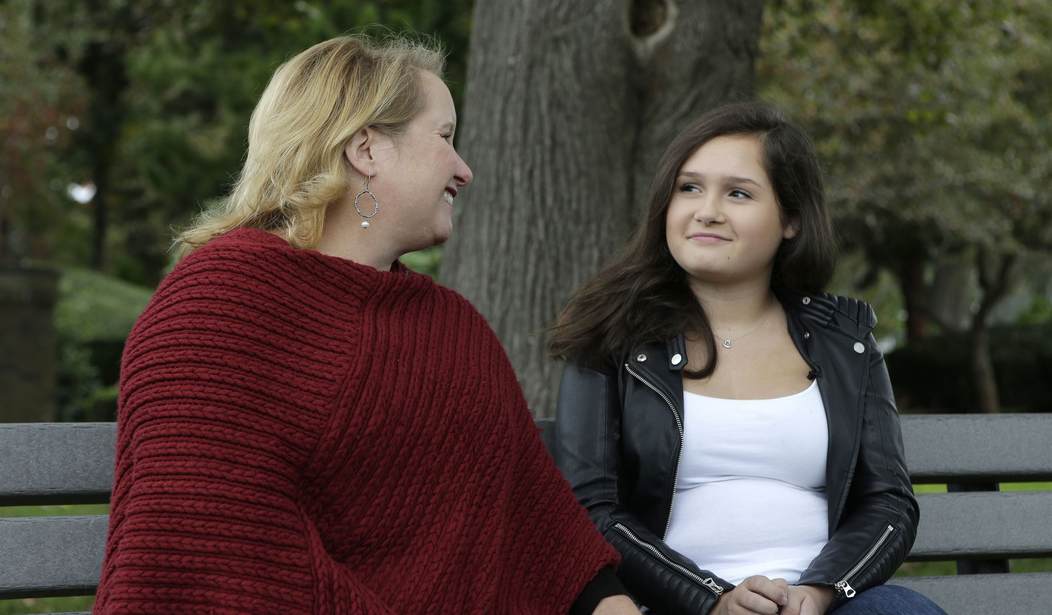Until fairly recently, transgenderism was considered a mental disorder. It was called gender dysphoria, and having this disorder carried a lot of problems with it.
Not only did you feel alienated from your own body and wish to mutilate it to make yourself look more like the gender you feel like you are, but that feeling caused you high amounts of depression. This is why the transgender community has a 41 percent suicide rate. If you do manage to have transitional surgery, you’re 19 times more likely to resort to suicide according to studies.
There’s no way to look at these numbers and conclude that it’s good to push the concept of transgenderism on your own child, but that’s exactly what model Emily Ratjakowski has vowed to do with her kid
According to the Daily Wire, Ratjakowski won’t even allow her kid to settle on gender for themselves until they’re 18:
“When my husband and I tell friends that I’m pregnant, their first question after ‘Congratulations’ is almost always ‘Do you know what you want?’ We like to respond that we won’t know the gender until our child is 18 and that they’ll let us know then,” Ratjakowski penned in an essay for Vogue.
After going on for several paragraphs about her childhood issues and her apprehensions about having either a boy or a girl, weighing the pros and cons for both, Ratjakowski then comes to the conclusion that forcing gender preconceptions onto babies damages them in the long run.
“I don’t like that we force gender-based preconceptions onto people, let alone babies,” she wrote. “I want to be a parent who allows my child to show themself to me. And yet I realize that while I may hope my child can determine their own place in the world, they will, no matter what, be faced with the undeniable constraints and constructions of gender before they can speak or, hell, even be born.”
“I used to call myself superstitious, but now I understand it another way. The idea that I could ‘jinx’ something or the belief that I could project my thoughts in a particular way to bring about a certain result is actually called ‘magical thinking,’ a coping mechanism one develops to make oneself feel more in control,” she continued.
Ratjakowski concludes by describing the sense of “peace” she now feels by resigning away from such gendered thinking as well as thoughts about parenting and pregnancy in general. She does, however, refer to this being inside her as a “person.”
What Ratjakowski is doing here is effectively putting her child into harm’s way by suggesting that the kid should adhere to the concepts of transgenderism until they’re ready at 18 to make a very final decision or no decision at all.
She’s effectively pushing that 41 percent suicide rate and mounds of depression on her own child in the name of keeping up with the times.
It’s sad that her child will have to undergo this nonsense, especially since it’s based on bunk science. Writing for the Daily Signal, pediatrician Michelle Cretella writes that no one is born trapped inside a body that isn’t theirs, and she points to an experiment involving twins in 2013:
Identical twins contain 100 percent of the same DNA from conception and are exposed to the same prenatal hormones. So if genes and/or prenatal hormones contributed significantly to transgenderism, we should expect both twins to identify as transgender close to 100 percent of the time.
Skin color, for example, is determined by genes alone. Therefore, identical twins have the same skin color 100 percent of the time.
But in the largest study of twin transgender adults, published by Dr. Milton Diamond in 2013, only 28 percent of the identical twins both identified as transgender. Seventy-two percent of the time, they differed. (Diamond’s study reported 20 percent identifying as transgender, but his actual data demonstrate a 28 percent figure, as I note here in footnote 19.)
That 28 percent of identical twins both identified as transgender suggests a minimal biological predisposition, which means transgenderism will not manifest itself without outside nonbiological factors also impacting the individual during his lifetime.
The fact that the identical twins differed 72 percent of the time is highly significant because it means that at least 72 percent of what contributes to transgenderism in one twin consists of nonshared experiences after birth—that is, factors not rooted in biology.
Studies like this one prove that the belief in “innate gender identity”—the idea that “feminized” or “masculinized” brains can be trapped in the wrong body from before birth—is a myth that has no basis in science.
Gender dysphoria is a very real mental disorder, but pushing it on someone, especially a child, is not only cruel but unnecessary. The vast majority of children are born non-dysphoric and it seems that elements of the left want to push this disorder.
And for what?
To get mainstream clout? To seem open-minded and progressive?
If the science says it’s a bad idea, and the numbers of dead say it’s a bad idea, then what part of it is a good idea?
At this point, it just seems more like a selfish act.
(RELATED: You Can Be Transgender, but Don’t Force Everyone to Pretend Along With You)















